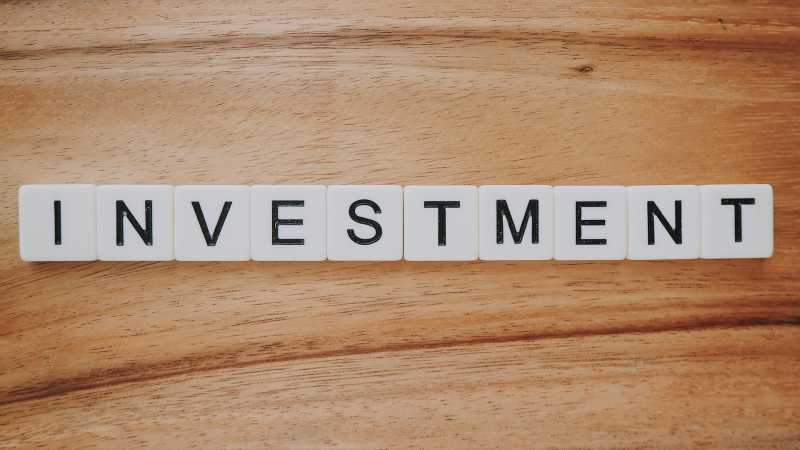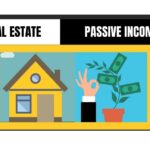To our knowledge, one of the best ways to build wealth and grow your hard-earned money is through Investing. And, whenever we listen to the word “Investing” do you know whose name comes to our mind first? Warren Buffett! Right! We all know he is one of the most successful investors of all time. Now imagine what will happen when you get to learn 7 secrets to investing like Warren Buffett. You will definitely make money.
Through this book summary, we would try to address the biggest problem of building wealth i.e. how to grow our money. The book “7 Secrets to Investing Like Warren Buffett” is written by Mary Buffett (Bestselling author & Ex-daughter-in-law of Warren Buffett) and Sean Seah (Investor & Author). We have summarized it in simple words to make you understand how to pick stocks for investing in an easy way.
Note – This article is going to be relatively long but be assured, you would gain the most powerful knowledge about investing in this post so stick with us till the end.

7 SECRETS TO INVESTING
1. The Power of Habits
Habits define you and your life. If you are overweight, probably you are not eating the right food and not doing exercise. If you are broke then you might not be doing the right financial planning.
As per the CNBC article (published in Aug 2017), lottery winners and other people who receive financial windfalls tend to lose their newly found money and end up being worse off than they were initially. This is because people do not adopt empowering habits and instead resort to get-rich-quick schemes.
Now let’s look at important habits of wealthy and successful people, which you can adopt and start witnessing the positive changes in your life –
a) Watch your spending
For many years, Warren drove an old Volkswagen Beetle though he could afford a new car. People thought that the reason that he kept driving the old car was that he was cheap.
But, Warren in reply to their opinion said that “Look – a new car will cost me $20,000. And, 30 years later, it is going to be worth nothing. In fact, it may not even last for 30 years. However, if I compound $20,000 annually for 10 years, it is going to be about $150k. In 20 years, it will probably become $1.5 million. And in 30 years, it’s going to be worth $9.9 million! $9.9 million! That’s just too much to pay for a car!”
Warren says you should save first and spend whatever you have left. Therefore, the next time you receive your paycheck, save at least 10% of it as savings. You can then spend the remaining with peace of mind while remembering that every penny counts.
How to build up your saving muscles?
Practice saving by taking a small step every week and progressively increasing your commitment to saving with consistency. You can start saving a dollar in the 1st week and two dollars in the 2nd week and three dollars in the 3rd week and so on. By the 52nd week, your savings would become $52 a week.
b) Find a Job you love
In many companies where the management stayed on because they loved their jobs, Warren bought them. A great example is Mrs. Rose Blumkin. She sold Nebraska Furniture Mart to Warren when she was 89 years old and continued to work for the company until she turned 104.
Find out what industry you love and look for a job in it and be passionate about it. Passion does not only trigger happiness but also increases productivity. Many top Hollywood studio executives started out in the mailroom and climb their way to the top because of their passion.
How to discover your passion?
Draw a quadrant, In 1st box, write at least five things that make you happy. In 2nd that makes you angry as it can help you determine why you are angry about something and you may have a chance to find your passion in this contrarian approach.
Next, write down five things that you’re good at. Think of things people may ask you for advice about. In the final quadrant, write down five things you must do before reaching the end of your life.
Now, look carefully at the four quadrants you would notice trends or areas of your passion, and find a job in that field. Jump out of bed every morning and live with passion. Truly wealthy people do what they love and love what they do.
c) Avoiding Debt
I’ve seen more people fail because of liquor and leverage – leverage being borrowed money.
Warren Buffett
With the advancement of technology, the use of credit cards has also risen. No doubt it has brought us a lot of conveniences but with greater chances of falling into debt if we don’t know how to watch our spending carefully.
Remember these two most important things about credit cards before you use them:
- Credit cards incur high-interest rates if the outstanding balance is not paid off every month. Therefore, pay your credit card bills in full on time.
- Credit cards encourage us to spend more. This is because when we do physical transactions using cash then it pains us psychologically but on the other hand, the effect is lower if you use online mediums to pay for purchases. Therefore, use cash instead of credits.
The authors suggest that unless you are a sophisticated investor who understands how to mitigate risk and can afford the loss, you should stay away from borrowing money.
d) Risk Management
There are three kinds of people, one who takes huge risks to get rich quickly and ends up crashing at the bottom of a cliff.
Second who does not dare to take a risk at all, inflation eats the money in their bank account.
Third who knows how to identify and mitigate risks to the lowest degree possible. These people are actually wealthy people who are open to investments that can help grow their wealth multifold.
RISK MANAGEMENT ACTIONS
i) Emergency Fund
As per an article released by Forbes in Jan 2016, 63% of Americans don’t have enough savings to cover a $500 emergency. The authors recommend us having at least three (3) months’ worth of living expenses in liquid savings. This fund should not be meant for investment, it should be easily retrievable but kept out of sight.
ii) Ample Insurance
As per the author’s opinion, we need insurance to secure at least two situations:
- Loss of Income
- Incurring medical expenses
expenses. Everyone in the family should be insured not just breadwinners.
e) Taking care of your health
Warren noted that our body and our mind are the biggest assets we have. In 2007, Warren revealed that his doctor had asked him to make a simple choice – either eat better or exercise. Warren chose the latter “the lesser of two evils”.
Authors have kept this habit in simple words: Eat better and Exercise!
f) Continuous Improvement
Truly wealthy people never stop learning and improving. Speaking to a group of MBA students, Warren once said that in determining whether you will succeed, there is more to consider than intellect and energy.
You would always want to hire people whom you admire the most who have more leadership qualities and integrity instead of high intellect. Thus authors suggest writing down the positive qualities you admire in others and making them habitual and qualities you detest the most and relate with yourself, slowly removing these habits a little every day from your life.
As Charlie Munger said, “Spend each day trying to be wiser than you were when you woke up”.

2. The Power of Value Investing
The idea of investing is to buy and own profitable businesses!
Warren has some of the most profitable businesses such as Coca-Cola, Kraft Foods, and American Express in his investment portfolio.
Each time somebody buys Coca-Cola can, eats a snack from Kraft Foods, and uses a card from American Express, Warren becomes richer!
Just a quick fact: about 1.9 billion Coca-Colas are sold in a single day. That means 79 million cans every hour, 1.3 million per minute, and 21,990 cans per second.
1 second, 2 seconds, 3 seconds…
That is about 65,000 cans sold and if you own “The Coca-Cola Company,” you will be 65,000 cans of Coke richer every three seconds.
So that was investing what about value?
Value stands for buying good and profitable businesses at sensible prices (undervalued businesses).
You might wonder why some people who have bought shares of profitable businesses do not make money from the stock market. Because they bought it at an overvalued price.
3. Generating Stock Ideas
Where to find great stocks to invest in?
Ask yourself, “What are the characteristics I will look for in a good stock or business?”
Write down at least 5 characteristics you would want that stock should possess. For e.g. you may want them to possess these qualities:
- Profitable business
- Lots of loyal customers
- Always ahead of trends
- Market Leader
- Good growth potential
Where do you think you can find great stocks that possess these characteristics?
A) Circle of Competence
The first step an investor must take is to determine where to invest and Warren calls this- the circle of competence. It is important that you buy businesses that you understand and are interested in.
Let’s find businesses in your circle of competence –
List the names of businesses you earn your money from. (These can be your company and your company’s clients.)……………………………..
List the names of businesses where you spend your money. (Track your bills to see where your money has been going month after month)……………….
List some of your areas of expertise. (Your talents for e.g. exercise, singing, cooking, computer programming, investing, teaching, etc.)………………
Lastly, list some things you have an interest in and passion for. (These can be your hobbies or a particular subject you would want to learn more about.)……………….
When you have made the above list, you may find an intersection between the things you spend money on, make money from, and have talent in and passion for.
A possible example could be:
- What do I love to do? – Eat, Read, Teach, Play with Children, Play Computer games, Holidays, etc.
- Where do I earn/spend money? – Teaching, Investing in Stocks, Kids, Clothes, Computer Stores, Bookstores, theme parks, eateries, holidays, etc.
- What am I good at? – Computer Programming, Writing, Choosing good restaurants, Parenting, Teaching, etc.
If you will observe the common things above, you would find Restaurants, computers, and Education as your sweet spot area for investment.
If you are feeling a little stuck, then you may refer below to some possible sectors and industries, and circle those that are familiar to you and focus on them.
Basic Materials
Agricultural Chemicals, Aluminum, Chemicals -Major Diversified, Copper, Gold, Oil & Gas Pipelines, Oil & Gas Refining & Marketing, Silver, etc.
Utilities
Diversified Utilities, Electric Utilities, Foreign Utilities, Gas Utilities, Water Utilities, etc.
Consumer Goods
Beverages – Wineries & Distillers, Business Equipment, Cigarettes, Cleaning Products, Confectioners, Dairy Products, Trucks & Other Vehicles.
Financial
Accident & Health Insurance, Asset Management, Closed-End Fund-Debt, Regional – Pacific Banks, etc.
Industrial Goods
Aerospace/Defense – Major Diversified, Aerospace/Defense Products & Services, Residential Construction, Small Tools & Accessories, Textile Industrial, Waste Management, etc.

B) Financial Websites
Financial websites can also be used to find stock ideas. So, bookmark these and get constant updates.
a) Yahoo! Finance (http://finance.yahoo.com/)
This website publishes finance news really quickly. The author suggests looking for a company that has bad news because people will overreact and sell off their shares. These times you can get a good undervalued stock deal when you know that the company has gotten into some temporary trouble that will not affect their business dramatically.
b) Seeking Alpha (https://seekingalpha.com/)
It is a hub where different contributors across the world share their opinions and contribute insights on a daily basis which can be used to find out investment ideas. However, differentiation of opinions from facts may be required.
c) Buffett Online School (https://www.facebook.com/buffettonlineschoolglobal/)
It is the Facebook page of the authors’ and the information is suitable for new investors. Their investment analysts will answer us on a weekly basis.
d) MarketWatch (www.marketwatch.com)
MarketWatch is another website that provides regularly updated news and it also provides a virtual stock exchange for practice before diving into the real market. (U.S. Centric)
e) The Wall Street Journal (www.wsj.com)
This website provides information on stocks all over the world with stocks’ four years of financial data.
f) GuruFocus (www.gurufocus.com)
This website tracks some of the most famous investors in the world and it also provides lots of insightful articles on value investing as well.
g) The Motley Fool (www.fool.com)
It is a stock advisory website that provides opinions beyond financial data, including useful information about company culture and business potential.
Conclusion – These websites will come in handy to assess and evaluate companies as possible investments.
C) Tracking the Richest Man
The richest persons on earth are either entrepreneurs or investors. Like Jeff Bezos made it to the top of the Forbes list of richest people by holding shares of Amazon and Mark Zuckerberg through shares of Facebook.
You can start by googling “Forbes Richest” for the wealthiest people and their businesses for good stock-investing ideas. You will notice, that most of the companies are available to us for investment through the stock market. So go ahead and search and make your own list. Below are some of these names and their sources of wealth –
- Bill Gates (Microsoft)
- Warren Buffett (Berkshire Hathaway)
- Larry Page (Google)
- Larry Ellison (Oracle)
- The Walton family (Walmart)
D) Best Companies
You can also look at companies with good working culture. To get a list of these companies, you can visit Fortune or Glassdoor, as these sites rank companies based on employee satisfaction on an annual basis.
Based on the author’s search in May 2019 below companies are ranked in the top 100 for both Fortune’s “Best Companies to Work For” and Glassdoor’s “Best Places to Work: Employees’ Choice” –
- Salesforce (Ranked 2 in Fortune and 11 in Glassdoor)
- Cisco (Ranked 6 in Fortune and 69 in Glassdoor)
- Intuit (Ranked 24 in Fortune and 38 in Glassdoor)
E) Shopping Mall
Warren Buffett is known to have said that he prefers looking for stocks on Main Street rather than Wall Street. Some of his top holdings include Kraft, Coca-Cola, American Express, and Wells Fargo & Company. He found these stocks as he is a customer of these businesses.
If you enjoy shopping, you can easily find some good companies to invest in as Warren did and if you don’t, you can identify good companies by paying more attention to the following:
- Which shops have a lot of customers and have been in existence for many years?
- Which products and services are popular and growing?
- What necessities do many people buy on a regularly recurring basis?
- What products must supermarkets carry?
- What products must big retail stores carry?
By doing this you can find some good companies to invest in.
F) Best Value Investors
Look for the portfolio of best-value investors. Avoid tracking short-term traders as their portfolio changes frequently. To search value investor’s portfolio you can search on Google “investment name + portfolio” and see the top five highest weighted stocks of their portfolio.

4. Economic Moats
The key lesson is to always have an advantage in the investment world. Warren Buffet likes to explain this advantage metaphorically, using the analogy of a moat around a castle to ensure you have extra protection. He calls this an Economic Moat.
Some Businesses, without any economic moat, go bankrupt in difficult times. On the other hand, businesses with Economic Moats enjoy even greater profits with economic improvement, because many of their rivals already have been wiped out.
IDENTIFYING MOATS
Find out through these Five questions –
- What is the value (products/services) this business is providing?
- Is this value provided by anyone else?
- Will I choose to get this value from this business or someone else?
- Why would I rather get this value from this business instead of others?
- Is the reason(s) you identified in question four sustainable in the long run?
Let us look at different types of Economic Moats –
Branding
Businesses with strong brands are likely to possess a durable competitive advantage in the market. Good examples can be iPhone, KFC, and Nike, because of their products and branding.
But if we find a business that needs constant innovation to survive then we need to be careful. Because these businesses might not have a strong moat. We want to look for companies with products and services that do not require too much R&D. But it should not mean the company should not invest in R&D, we just avoid businesses that require R&D in order to survive.
In our high-tech world, the uniqueness of a product can be quickly compromised when competitors model their versions of the product after leading brands. Therefore, KFC has a more durable competitive advantage because it requires little or no innovation to survive.
Economy of Scale
Businesses with large scale can cut the cost of production and make their products cheaper than their competitors. Also, these businesses will get more attention from suppliers, and suppliers would give more discounts to these businesses as they cannot afford to offend or lose a big customer. Amazon can be the best example because of its huge networks and big bargaining power.
Legal Barriers to Entry
Legal protection such as patents can be barriers to entry for competitors. This is very evident in the pharmaceutical industry. During the patent protection period, competitors are not allowed to make, use, sell or import the protected drugs without the inventor’s consent. A good example can be paracetamol, an analgesic for minor aches and fevers. During the patent period, it was marketed by Tylenol (Johnson & Johnson brand). But later after the expiry of the patent period, brands such as Panadol and Feverall have taken part of Tylenol’s market share.
Therefore, it is also important to build the branding before the expiry of the protection period in order to gain a foothold as a market leader.
High Switching Costs
Invest in companies that have high switching costs for example Microsoft office. Because if a person has to install an alternative to MS office that he may need to purchase a new software package plus all the associated desktop applications, servers, and services. This will be a costly solution.
Conclusion – Make a list of companies with economic moats that could be a great investment opportunity as they have a good durable competitive advantage. However, remember two things – a) Moats may not last forever even the strongest brand can be threatened. b) Some companies have multiple moats such as unique products, branded names, etc.
5. Language of Business
Accounting is the language of business. In this part of the book, the authors explain three financial statements that help you to assess businesses to find out whether a business is a good investment or not.
You can find the financial statements of a company by searching for the investors’ relation tab on the company website for presentations or annual reports.
Shortcut method to find statements – Just google “company’s name + annual report” you will typically find the link to read the latest annual reports of the company.
There are three main financial statements:
- Balance sheet
- Income statement
- Cash-flow statement
A) Balance Sheet
A balance sheet is a record of what a business owes and owns. It has three main segments –
a) Assets: things the business owns
Current assets – Cash in bank, iPhone, Inventory, and Account receivables, Laptop, etc. (Assets that can be quickly converted into cash in a year or less)
Noncurrent assets – Car & House (Assets that would take more than a year to get converted into cash)
b) Liabilities: things the business owes
Current liabilities – Credit Card bills, Accounts payable, Term loans (Liabilities that are to be paid back within a year or less)
Noncurrent liabilities – House loan & Car Loan (Liabilities that can be repaid in more than a year)
c) Equity: also known as the business’s net worth (The value he will get after selling all his assets and repaying liabilities)
In summary: Equity = Assets – Liabilities
Equity: Equity has two components on the balance sheet –
a) Capital: It is the amount of money contributed by the business owner and its shareholders to start the business.
b) Retained Earnings: It is the profits the business made previously that were invested in the company to continue to finance the business. When the business makes money, it can return the money either to the shareholders in the form of dividends, or can retain the profits, which will be reflected as retained earnings on the balance sheet.
Important ratios and numbers to look at in the balance sheet
a) Is the equity (also known as the book value) of the business growing over time?
We want our business to get richer and richer with time. This is one of the key methods Warren Buffett uses to assess the business. So, look at the past years’ balance sheets. Are profits increasing? Is the debt decreasing?
b) Does the business have huge debt?
If the company has huge debt over it, it can be troublesome. Because one economic downturn can cause businesses not to perform well which will lead loan interest to compound and debt amount will grow. This is one of the main reasons companies go bankrupt.
But do not look at debt individually, check the debt relative to the size of the business. For that, we need to check the DEBT TO EQUITY ratio. A good debt-to-equity ratio is less than 50%.
The authors’ general rule is that if the items on the balance sheet become too complex, they choose not to invest in the business.
B) Income Statement
It is the report card of a business. It allows us to see if the business is making money or losing.
In the income statement, you would see terms like Revenue, Cost of goods sold, Gross Profits, details of expenses, taxes, and net profits.
Revenue – It is the number of sales or money collected from customers by the business.
Cost of goods sold – It is the cost of the material business used to generate the revenue.
Simply, Gross Profits = Revenue – Cost of goods sold or cost of sales (in case of service business). Note: If somebody or companies have income from investments then that amount will be added to the Gross Profits.
Deduct expenses such as rent, salaries, depreciation, electrical bills, bank interest, etc. from Gross Profits. The calculated amount will be profit before tax. In the authors’ opinion, good tax planning is also an important part of the management’s responsibilities. So focus on the net profit after tax of a business.
CONSISTENCE OF PROFITS IS IMPORTANT: It is an important thing to consider, whether the business is consistent in making profits. Analyze data for the past 10 years.
EFFICIENCY OF BUSINESS: Check Return on Equity (ROE) of the business to see whether the company making good use of its profits for the growth of the business. Return is basically the net profit after tax. (For e.g. say a business had equity of INR 48 Cr. in equity in 2015 and profits of INR 5 Cr. then ROE will be 10.41%). Analyze data for the past 10 years.
Generally speaking, a business that consistently has an ROE of 15% and above is an excellent business. As value investors, we should avoid businesses with inconsistent ROE.
C) Cash-Flow Statement
It tracks the amount of actual cash that flows in and out of the business for the current year. It may resemble with income statement but below are points where a cash-flow statement differs from an income statement:
a) The amount a business records as profit may not have been collected yet.
A vendor might have delivered the services to its clients but its clients would pay them later after a certain period of time as per the agreement. (Accounts receivables)
b) The amount you spent has not been paid yet.
A business might have purchased equipment from their suppliers but on payment credit period of 30 days, 90 days, or 180 days. (Accounts Payables)
c) Capital that the company collected or paid out may not affect the income statement.
They are some items that affect cash but not the income statement. For e.g. Lets a person borrowed money say $2000 from his mother-in-law and then he had an inflow of cash of $20000. But it is neither income nor an expense.
In a cash-flow statement, businesses have divided these transactions into three categories:
Cash flow from operating activities: It consists of Net income, Depreciation, Receivables, Payables, Taxes payables, etc. This portion shows the income statement (profit and loss) on a cash basis instead of an accrual basis.
Cash flow from investing activities: It includes investment in equipment/furniture, Purchase/sales of investments, etc. This portion of the cash-flow statement reports the buying and selling of long-term investments (such as equipment).
Cash flow from financing activities: It consists of Repayment of bank loans, Issue of dividends, Net cash used for financing activities, Net increase in cash, etc. This portion records activities related to how a company finances its business.

CASH IS KING
In any business, cash is very important. Below are the two important areas when deciding whether to invest in the business.
- Net cash from operating activities – It shows us whether there is cash coming in from operating the business.
- Free cash flow – It is the amount of cash that is available for us, the shareholders, after all the expenses. {Free Cash Flow = Net cash from operating activities – capital expenditures (necessary expenses to maintain current assets)}
Analyze 10-year data of net cash from operating activities and free cash flow.
SUMMARY
| Sr. No. | Item | Yes/No |
| 1 | Is equity (book value) growing over the past 10 years? | Growing equity is akin to a growing net worth of a business. |
| 2 | Is the latest debt-to-equity ratio less than 50%? | A business with a debt to equity indicates that it is conservatively financed. |
| 3 | Are the profits grown over the past 10 years? | We want to invest in businesses that have a good 10 years record of stable and growing profits. |
| 4 | Is the return on equity consistently high (more than 15%) over the past 10 years? | A high ROE indicates that the management of the company had been efficient. |
| 5 | Is the free cash flow of the company positive over the past 10 years? We want to invest in businesses with more “Yeses”. | A consistently positive free cash flow indicates that the company has sufficient cash to operate. |
6. Valuation
The key idea of value investing is to purchase an investment for less than its true value. It is like you are able to buy a dollar with only 50 cents.
Graham’s Net-Net
Net-Net was the term coined by the father of value investing, Benjamin Graham for the conservative valuation method.
The key idea of Net-Net is to calculate how much shareholders would get back if the company stopped operating and returned all its money to them. This situation is known as liquidation.
To find a stock for less than its true value, we need to:
- Calculate the liquidation value
- Buy the stock at a margin of safety (buy at a buffer below two-thirds of its value)
Liquidation Value: The conservative method used by Benjamin Graham for liquidation was to calculate the net current asset value (NCAV).
NCAV is the net current assets. (Net current assets = current assets – total liabilities)
{Current assets = cash + inventories + accounts receivables}. Negative (-ve) NCAV businesses are not a good candidate for purchasing using the Net-Net approach.
Margin of Safety: In The Intelligent Investor, Benjamin Graham explains the concept of margin of safety. Accordingly to Graham, to have a true investment there must be present a true margin of safety.
How to find investments with a true margin of safety? The answer is to buy stock at a discounted price. In simple words, we want a 1/3rd discount before we are willing to buy the stock.
For e.g. The NCAV per share is $1, then we will only be willing to pay $0.66.
Note: Things can go wrong, if a company loses money but chooses not to close then assets will run dry and will cause the net current asset value to drop below our original entry price. This is what Warren calls keeping the investment in your circle of competence. Warren avoided technology stocks because he said he did not understand them well enough to acquire a stake in them.
Important factors for stock selection
1. Price-to-Book Value
The key idea of price-to-book value is to buy a company share below its net asset value.
Let us note that Net Asset Value (NAV) = Equity = Book Value = Net worth of business
NAV is similar to NCAV, the only difference is that instead of taking only the current assets, we also include the noncurrent assets as well. When we use websites to look for undervalued stocks then we will search for stocks with a price-to-book value that is 0.8 or lower. That means, if the book value is $5 then our game plan is to buy a company share when the price <= $4.
But it is to be noted that we only use price-to-book to evaluate companies that require many physical assets in their day-to-day operations.
2. PE Ratio
Price-to-earnings (PE) ratio is often used to determine if a company offers good value to investors. Here we look at earnings ability instead of valuing a company on the value of its assets.
For e.q. Let’s say at a price of $50000, a business produces $5000 of earnings. Then PE ratio will be 10 i.e. 10 times the earnings. In other words, we can expect to wait 10 years to break even on our original investment if we pay $50000 at a PE of 10.
What is a Good PE?
Different industries are expected to grow at different rates. For e.g. the technology sector has been growing much faster than traditional construction sectors. When the growth rate is faster, the market is also willing to pay a higher PE to buy the business.
As of June 2018 below are the average PE ratios for each industry:
| Sector | P/E |
| Energy | -38.5 |
| Financial Services | 16 |
| Consumer Defensive | 19.9 |
| Industrials | 21.9 |
| Utilities | 35.2 |
| Consumer Cyclical | 22.2 |
| Basic Materials | 36 |
| Health Care | 21.5 |
| Communication Services | 20.3 |
| Technology | 26.3 |
| Real Estate | 22.6 |
| S&P 500 | 25.7 |
We should find good investments in industries with low, or even negative, PE. But it must fall within your circle of competence or interest. A relatively safe position is to buy a stock with a PE 30% below the average PE of the industry.
How do we know when a business has hit the required PE ratio?
Check the Earnings per share (EPS) of the company. EPS is simply the company’s total profits divided by the company’s number of outstanding shares. Then we might buy a company’s shares when its share price hits EPS * 20% of Avg. PE.
3. Dividend Yield
The dividend yield is used to evaluate stocks we invest in for their dividends given by the company to its shareholders. The idea is to buy good businesses that are paying dividends at a good rate consistently. Say a company may be paying $0.10 of dividend per year for a $1 share (i.e. 10% dividend yield).
Remember these two things while buying dividend stocks –
a) Check the consistency of a company, whether it is paying a dividend yield consistently for 10 years in order to consider it as a stable dividend-paying company.
b) Buy dividend stocks of dividend yield at least 2% higher than risk-free rates. (Risk-free rate is the rate that is higher than current bond rates or bank deposit rates.)
Growth Formula to get the entry price of a stock
It is Graham’s secret formula for growth stocks. The idea is that the PE ratio does not take into account that businesses can grow, therefore, Graham brought the expected growth rate in the growth formula model to obtain the intrinsic value of a business.
V = EPS * (8.5 + 2g)
EPS = Earnings per share
8.5 is the assigned PE ratio of a stock with a 0% growth rate.
g is the expected growth rate of the company for the next 10 years (we use the past 10-year growth rate for the expected growth rate.
Later, we will add a 30% discount as a margin of safety on V to get an entry price of a stock.

7. Portfolio Management
Warren Buffet once said, “Diversification is protection against ignorance.” It basically speaks of the importance of diversifying our investments to manage risk, so that one financial disaster will not wipe our complete finances.
Here are some portfolio management rules suggested by the Authors –
Rule 1: Start with funds allocation
We can look at the PE ratio to assess whether the market is overvalued or undervalued. Accordingly, we can plan like Warren, how much money will go into investments and how much will be set aside as cash for future investment opportunities.
Rule 2: Never put more than 10% in any stock
As per this rule, your portfolio should contain 15 to 20 stocks with a maximum investment of up to 10% in each stock.
Rule 3: Stronger stocks, higher weight
You can rank your stocks list in terms of confidence you have about them and group them into bands or grades – e.g. Grade A (stronger stocks), Grade B, Grade C. Give a full 10% allocation to Grade A stronger stocks, 9% allocation to Grade B and 8% to Grade C.
Rule 4: Review your portfolio at least once a year.
Review their annual reports every year and notice any special situations and any news to assess whether to continue with the same stock or change is required.
Rule 5: Do not sell purely based on price.
It means you should not base your decision of selling your stocks purely on their price. We should also review the business’s performance together with its stock price.
WHEN STOCK PRICE DROPS
If a stock price drops by 20%, then instead in a hurry to sell it, review its performance like Warren Buffett used to do. Check company fundamentals if they are still great, you should not sell them instead buy more.
WHEN STOCK PRICE RISES
If a stock price suddenly increases significantly, then instead of being in a hurry to sell it to capture the profits check the fundamentals because you might mistake the selling of stocks too early. You should review the business performance and re-evaluate the price based on the valuation methods discussed earlier. If the business is performing well and the stock is still undervalued then you might choose to buy more of it and vice versa.
Conclusion
Mindset
The market does not reward the smartest person because even Sir Issac Newton, a genius, lost millions in the stock market in the company named South Sea Company.
Below are some key characteristics that compose the mindset of successful investors:
a) Patience – Impatience and eagerness to get rich quickly cause failed investments and people buying into scams that promise high returns. A good investment is boring and takes time to show results.
b) Independent thinking – All successful investors practice independent thinking and take decisions on whether to invest in the stock on their own instead follows tips or hearsay.
c) Focus – It is important for a strong investor to focus only on what he or she knows best instead of jumping at every new idea. So, remain focused on the circle of competence or interest.
d) Consistency – As Benjamin Graham once said, “The individual investor should act consistently as an investor and not as a speculator.”
Game plan
It is a game plan for a multimillion-dollar portfolio as mentioned by the Authors. So far you have a good amount of knowledge on investing but knowledge is power only when it is applied.
Below are the five key points to help you achieve financial success:
a) Pay yourself first – Instead of paying anyone else such as paying phone bills, utility bills, mortgages, food, clothing, etc., it is recommended to set aside at least 10% of your salary every month.
b) Save up for an emergency fund – It is the rainy fund that may be required in an emergency situation, a good suggestion is to save up at least 3 months’ worth of living expenses.
c) Get insurance – It is imperative to get an insurance plan that covers accidents, critical illness, and hospitalization. Because most investors believe in taking care of the downside and the upside will take care of itself.
d) Clear your debts – Long-term loan interest must be as low as possible and we should target to pay off these debts as soon as possible to set ourselves free.
e) Invest and compound – Warren Buffet made billions by being patient and by compounding. So, invest the amount and let it compound. A $200 dollar investment per month at a rate of 15% will convert the amount invested to $1.2 million dollars in 30 years period. Increase the investment amount in the first place and witness the eighth wonder of the world known as Compounding.
If you really liked our article “7 Secrets to Investing Like Warren Buffett – Book Summary” then feel free to share it with your family, friends, and peers. Do share your thoughts on the article in the comment section below.



